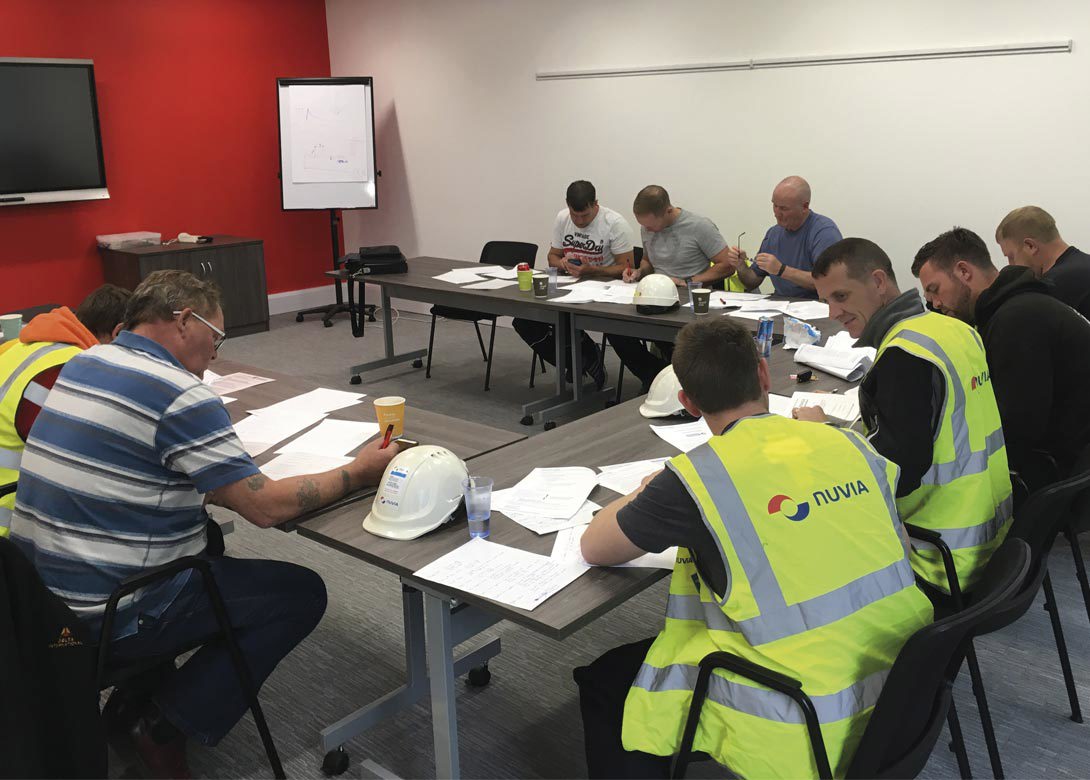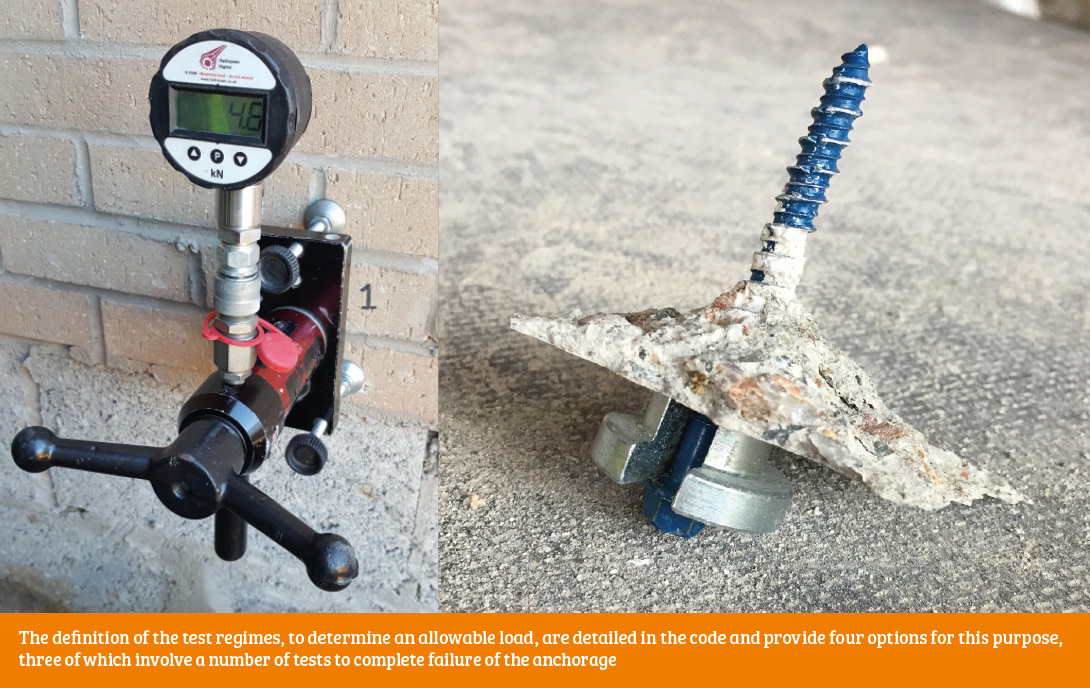
By John Muir, technical manager, Construction Fixings Association
In the construction industry today, it is a very common and increasing practice to carry out on-site tension testing of anchors. However, there is often confusion regarding what type of testing is required, and under what conditions.
This confusion can lead to the wrong type of tests being requested and test bodies carrying out unnecessary testing, which all could be avoided if certain procedures were followed or if correct assessments were performed initially. Before discussing the implications of this, it is useful to look in detail at the two types of test methods that can be used to carry out site testing.
Test criteria are defined in Clause 9 and Annex B of BS 83539:2012 ‘Code of practice for the selection and installation of post-installed anchors in concrete and masonry’ and are as follows:
Proof testing:
This is applicable when the specification stage of the anchor selection process is reached, as outlined below. The proof test is purely to check on the quality of the installation and is applied to working fixings on the project, installed by the project installers. The contractor is responsible for quality assurance measures such as proof testing, and the associated costs.
A test load is derived, based on the applied load, and is carried out on a percentage of anchors, as defined by the code.
The anchors to be tested are selected at random. Alternatively, a specific industry standard may detail a unique test frequency. The purpose of the proof test is to provide assurance regarding the quality of the installation, by demonstrating that a modest safety factor exists. These tests can not be used to prove the suitability of an anchor for a specific application. This would be achieved through allowable load tests.
Allowable load tests:
Where the application involved is not covered by a relevant ETA, and where the strength and condition of the base material is unknown, with no published data available, it may be necessary to determine the allowable load of an anchor and/or base material. This would generally not apply to concrete.
The definition of the test regimes, to determine an allowable load, are detailed in the code and provide four options for this purpose, three of which involve a number of tests to complete failure of the anchorage.

Following analysis of the test results, an allowable load is determined and can be used in the selection and design process to produce a detailed anchor specification.
Tests for anchors therefore fall into these two distinct approaches and no other form of test would be valid or justified. The selection process of a suitable anchor for a given application is also very important to understand, and again, the selection method is defined within BS 8539:2012 Clause 5.
In the selection process, the first essential requirement is that all anchors, where possible, should have a relevant European Technical Assessment (ETA). For concrete this should always be the case.
The ETA for the anchor will provide detailed performance data, which is presented by the manufacturer in the form of a Declaration of Performance – a requirement under the Construction Product Regulation and for CE Marking. This information is used by the specifier to select and design the suitable anchor for the application and then fully specify this anchor for the project.
When the specification has been completed the final part of the process is the correct installation of the specified anchor. If at this stage there is any question over the quality of installation it may be decided that a proof test regime is required.
With regards to determining what, if any testing sampling should be adopted, a key statement from the BS 8539:2012 Clause 9 should be considered. The code states that where an anchor with a relevant ETA is installed by competent installers under supervision, there is no need for testing.
Taking these factors into consideration, the increased demand for proof testing on-site clearly introduces some key concerns. The use of ETA approved anchors allows an assurance of performance in-line with the Declaration of Performance, so should be sufficient to provide confidence in the anchorage, and if correctly installed will negate the need for proof testing.
However, since proof testing is primarily aimed at increasing confidence in the installation of the anchor, there is either a fundamental issue with the competence of anchor installers or at least a perception of competence issues. This means that the construction industry is addressing the symptom not the ailment.
If we have low levels of confidence in installation quality, surely the key is to improve the competence of the installers and provide qualified supervision to provide real quality assurance.
To achieve this we can introduce training of installers in the correct installation methods in a number of ways:
1. Certified training for installers, as run by the CFA in compliance with BS 8539:2012.
2. Toolbox talks by manufacturers, suppliers or competent staff, to installers at site level to demonstrate the correct installation method for a specific product.
3. Training within contractors for supervisors to equip them to:
a. Set up the installation properly at the start by ensuring the specified product is used.
b. Ensure the correct installation tools and accessories are available.
c. Confirm competence through certification or arrange training for all installers.
Proof testing is a valid quality assurance tool for a project, and indeed specialist cases such as safety harness eyebolts require 100% testing as mandatory. However, we need to trust in the ETA products, well trained installers and knowledgeable supervisors as the best option to achieve high standards of quality and safety in post fixed anchoring systems.
The Construction Fixings Association runs a wide range of CPD seminars and certified training courses on design, installation and testing of anchors to comply with the requirements of BS 8539:2012.

Having spent a decade in the fastener industry experiencing every facet – from steel mills, fastener manufacturers, wholesalers, distributors, as well as machinery builders and plating + coating companies, Claire has developed an in-depth knowledge of all things fasteners.
Alongside visiting numerous companies, exhibitions and conferences around the world, Claire has also interviewed high profile figures – focusing on key topics impacting the sector and making sure readers stay up to date with the latest developments within the industry.






